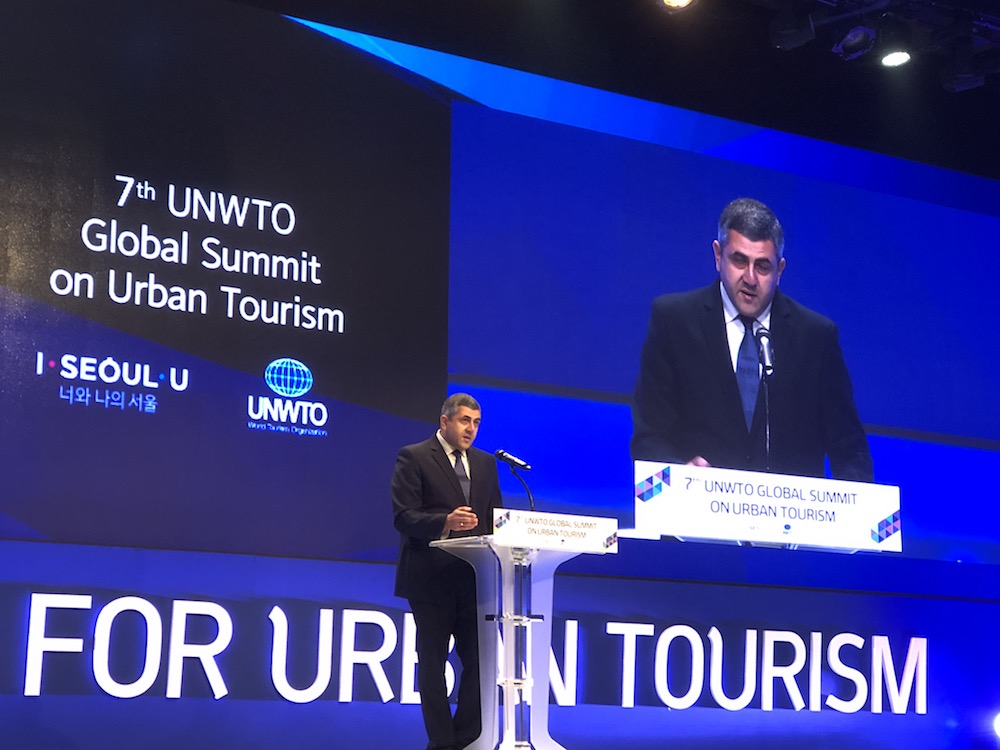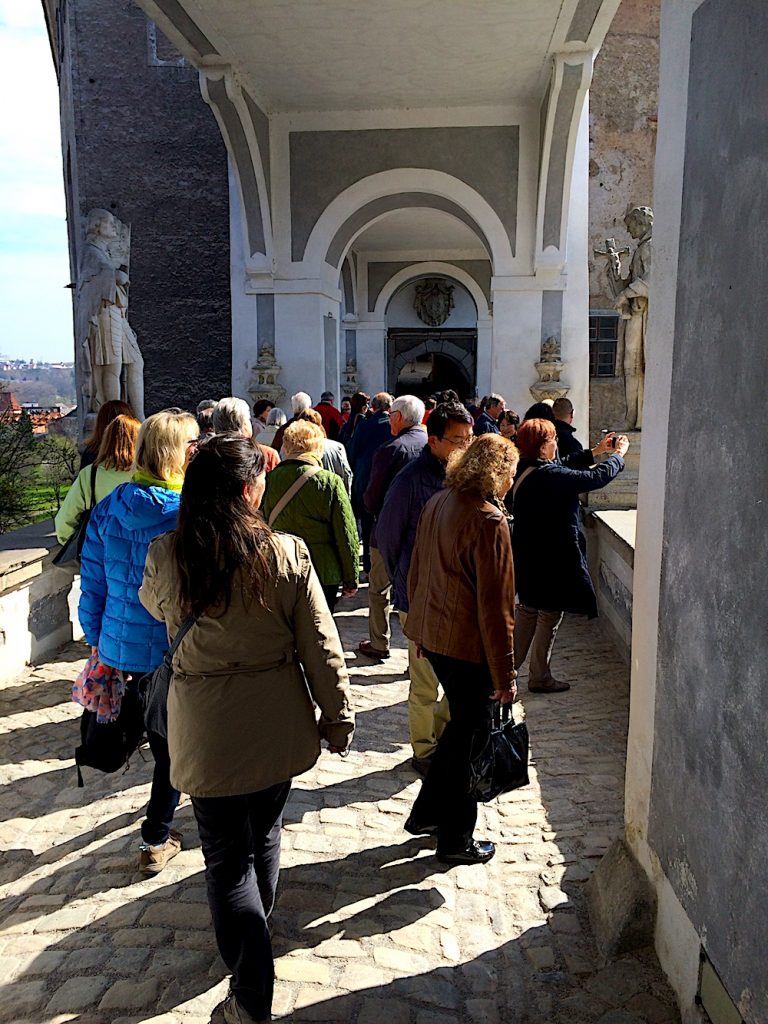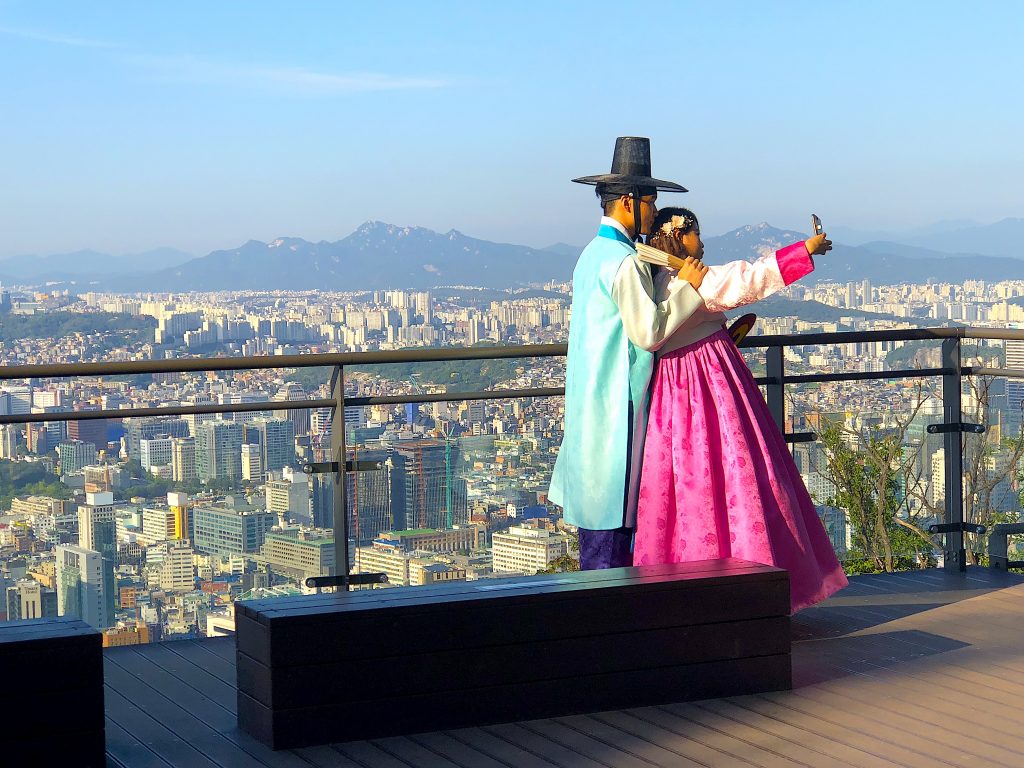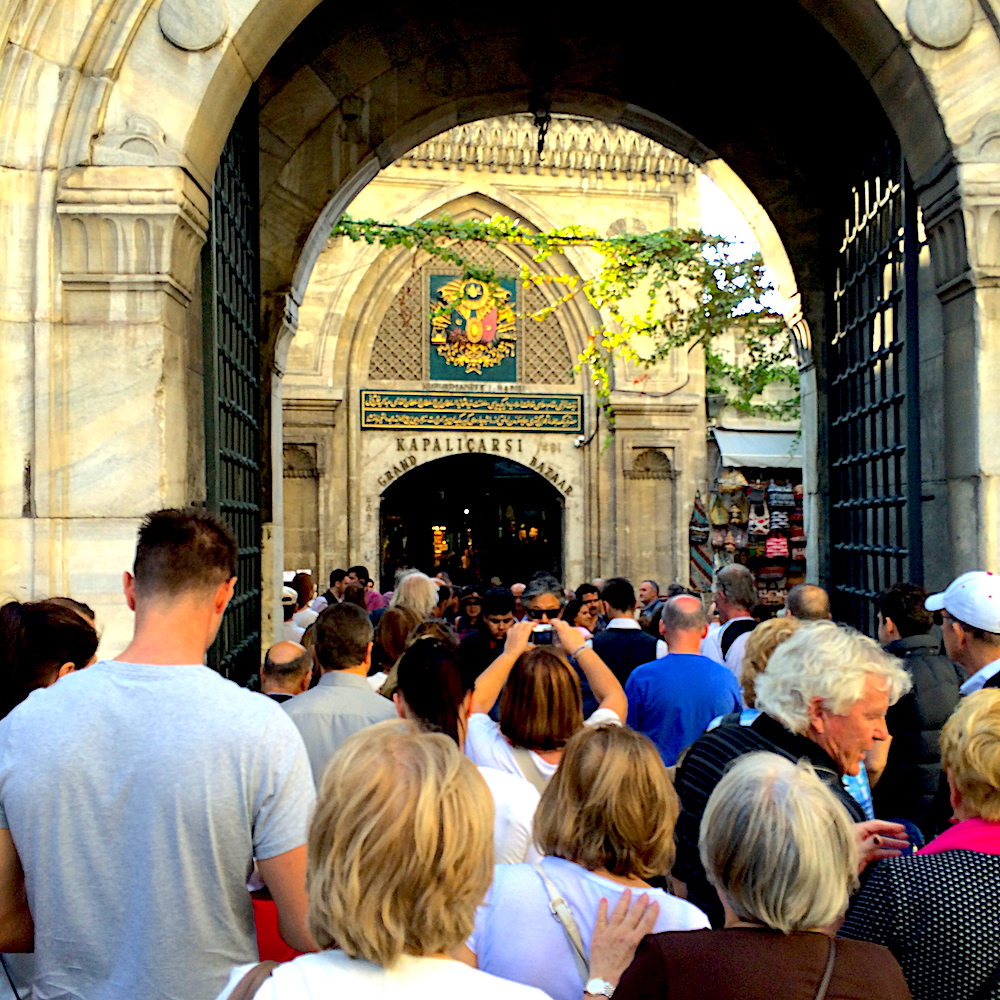Travel and tourism is a thing of inestimable value to most people. We dream of new places and save up diligently for these aspirational moments. But when does a walking tour turn into a nightmarish episode from The Walking Dead?
As the UNWTO met in Seoul last week for the 7thGlobal Summit on Urban Tourism, some 900 delegates from treasured cities around the world came together to hash out agreements on ways to manage what is now known as “overtourism” in the years to come.
“Governance is key,” said UNWTO secretary-general, Zurab Pololikashvili. “Addressing the challenges facing urban tourism today is a much more complex issue than is commonly recognized. We need to set a sustainable roadmap for urban tourism and place tourism in the wider urban agenda, also ensuring that local communities see and benefit from the positive aspects of tourism.”
Global tourism, a fast-growing industry that accounts for 10.4% of the global GDP,is expected to grow from 1.3 billion today to 1.8 billion in 2030. These are numbers many of the tourism representatives at the meeting believe will negatively impact local infrastructures and neighborhoods in places where tourism growth is a fast-moving train. Already, in several key destinations, particularly in European cities such as Amsterdam, Netherlands, Barcelona, Spain, and Venice, noise and public protests are providing reasons to create ways to preserve the quality of life in popular destinations without sacrificing tourism development, promotion and competitiveness.
“Around half of the world’s population lives in urban areas and this figure will keep growing. Cities have also become popular destinations for business and leisure tourists. Tourism is an important factor for socio-economic and cultural development for many cities and its surroundings. By the same token, the growth of urban tourism also creates challenges regarding the use of natural resources, socio-cultural impact, pressure on infrastructure, and mobility and congestion management. We must ensure local communities see benefits from the positive aspects of tourism,” Pololikashvili added.

UNTWO Strategies for Urban Tourism Sustainability
To that end, the UNWTO released a report at the summit that proposes 11 strategies and 68 measures to help understand and manage visitor growth.
Titled Overtourism: Understanding and Managing Urban Tourism Growth beyond Perceptions, key strategies in the report included:
- Promote the dispersal of visitors within the city and beyond
- Promote time-based dispersal of visitors
- Stimulate new visitor itineraries and attractions
- Review and adapt regulation
- Enhance visitor segmentation
- Ensure local communities benefit from tourism
- Create city experiences that benefit both residents and visitors
- Improve city infrastructure and facilities
- Communicate with and engage local stakeholders
- Communicate and engage with visitors
- Set monitoring and response measures

Rising Incomes, Easy Air: Formula for Mass Tourism Growth
As megatrends, such as globalization, urbanization, demographic shifts, rising middle-class and affluence come together with technological innovations, the effects of overtourism will continue to fester. The hunger for travel and the emergence of new tourism destinations have been met with a new ease and affordability supported by low-cost carriers and the recent emergence of home-sharing platforms. A blueprint for regulation and smart planning is right on time.
Joseph Pine, cofounder of Strategic Horizons, LLC and keynote at the Summit, may have been the first to name the trend of saturated tourism growth and call it “overtourism.” Also known for tabbing the “Experience Economy,” first in a 1998 article and then in a 2011 book with that title, Pine sees this as a trend that will become the most compelling expression of consumer culture in the 21st century.
“Today we have gone beyond goods and services – commodities that we all know – and have entered into the age of the experience economy. Experiences are the new economic driver. Experiences are what consumers want today,” said Pine. “Goods and services are only about three things: price, price and price. But value is created through experiences. Coffee at its core is just beans. If you roast those beans, package them and perform a service of brewing those beans for the customer, and then surround that brewing with the opulence and theater of a Starbuck’s, now that few cents of beans turns into several dollars for the cup. The consumer is paying for the theater, the time spent in that theater, and the customization of that cup of coffee just for them.”

Demand for Authentic Travel Experiences
He notes that some cities, such as Dali, a popular travel destination in China’s Yunnan Province, are now charging fees to visit the ancient city center – an act that is set up to preserve the site for years to come. Many European countries, from Austria to Switzerland, collect tourism taxes through hotel stays for these purposes.
“Everybody is getting into the experience business – manufacturing, retail… The experience IS the market and the best way to generate demand is with an engaging experience that gives the consumers their time’s worth,” he said, citing how the Guinness Storehouse in Dublin has become an icon of Ireland and easily the country’s top attraction with more than a million tourists a year filing through to see how the beer is brewed and taste newly crafted batches.
“How authentic these markers are is become increasingly important as visitors seek out authentic experiences in the places they visit. Authenticity is the new consumer sensibility, the primary criteria for deciding from whom to buy and what to buy. As life becomes more and more a paid-for experience, people increasingly question what is real and what is not,” he said.
Urban Tourism Seeing Solutions
There is no easy fix to overtourism or overcrowding. As destinations sort out their fact bases, strategies, stakeholder identifications, and find resourceful targets of funding, they need to take practical measures for both long- and the short-term solutions. A 2017 white paper called “Coping with Success, Managing Overcrowding in Tourism Destinations” published by WTTC with help from McKinsey & Company, came up with five key recommendations.
- Smooth visitors over time. Many destinations suffer from imbalances of visitors during certain seasons, days of the week, and times of day, as well as during headline events. Destinations must develop tactics to “smooth” these imbalances so communities and businesses can continue to reap the benefits of tourism.
- Spread visitors across sites. Spreading visitors geographically can help distribute tourists more evenly across residential and under-visited areas and thwart bottlenecks in overcrowded locations.
- Adjust pricing to balance supply and demand. However, while increasing the costs of visiting a destination or site is likely to limit the number of visitors, it also raises considerations of elitism and the ability of domestic tourists to access their own heritage.
- Regulate accommodation supply. Some destinations place direct controls on the supply of tourism accommodation, including beds in both hotels and short- term rentals.
- Limit access and activities. When overcrowding reaches a critical stage, the tactics above may not be enough to mitigate or recover from it. As such, some destinations are limiting or even banning certain tourist activities.
































































































































































































































































































Get Social